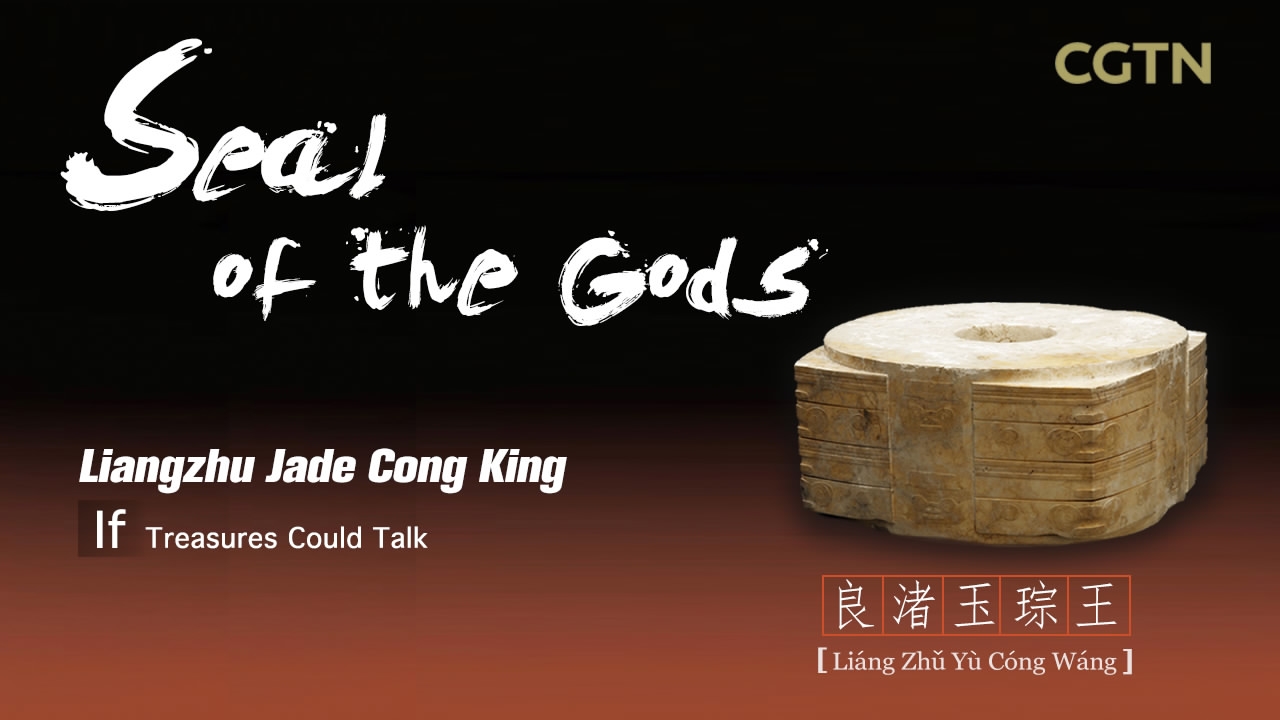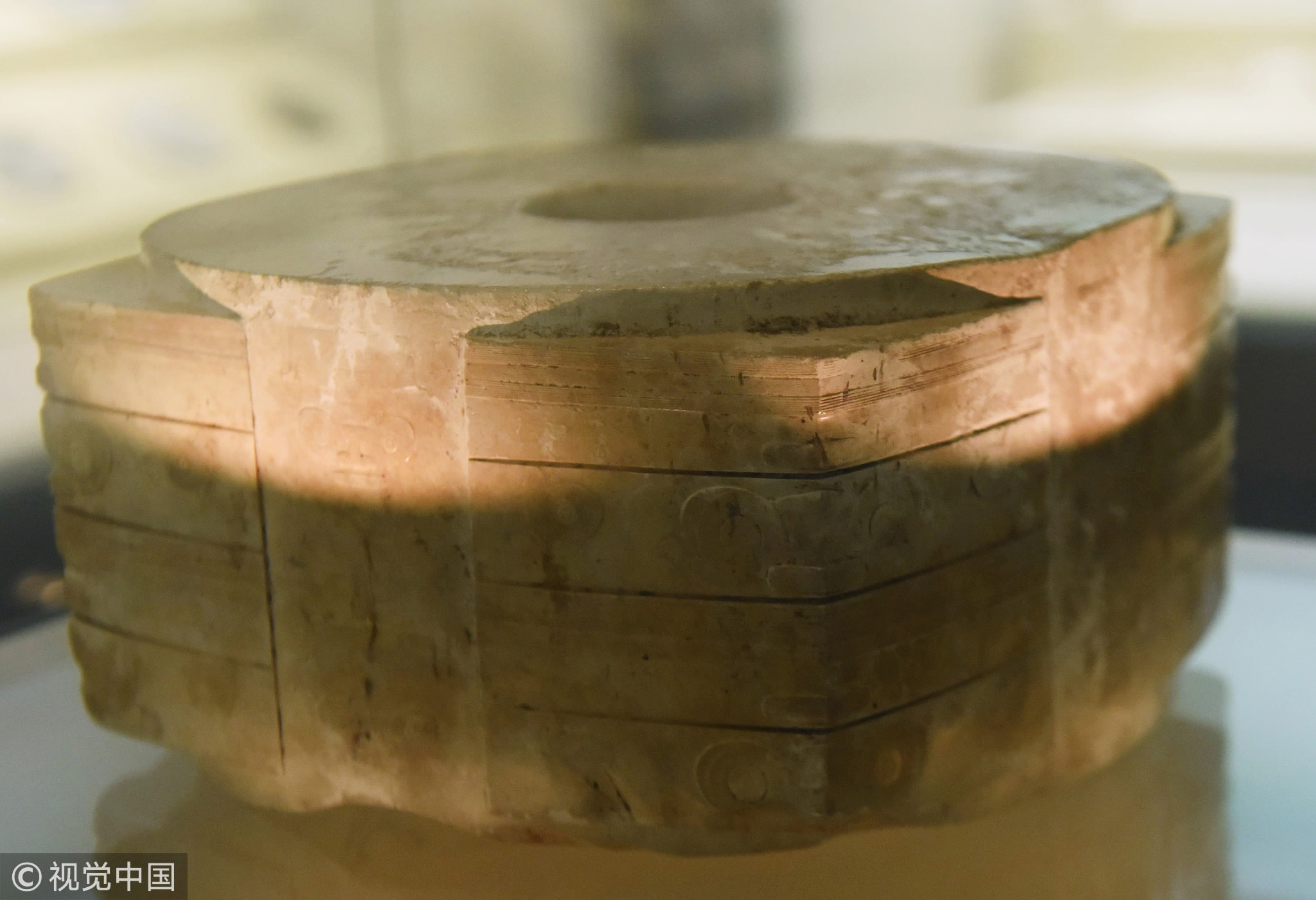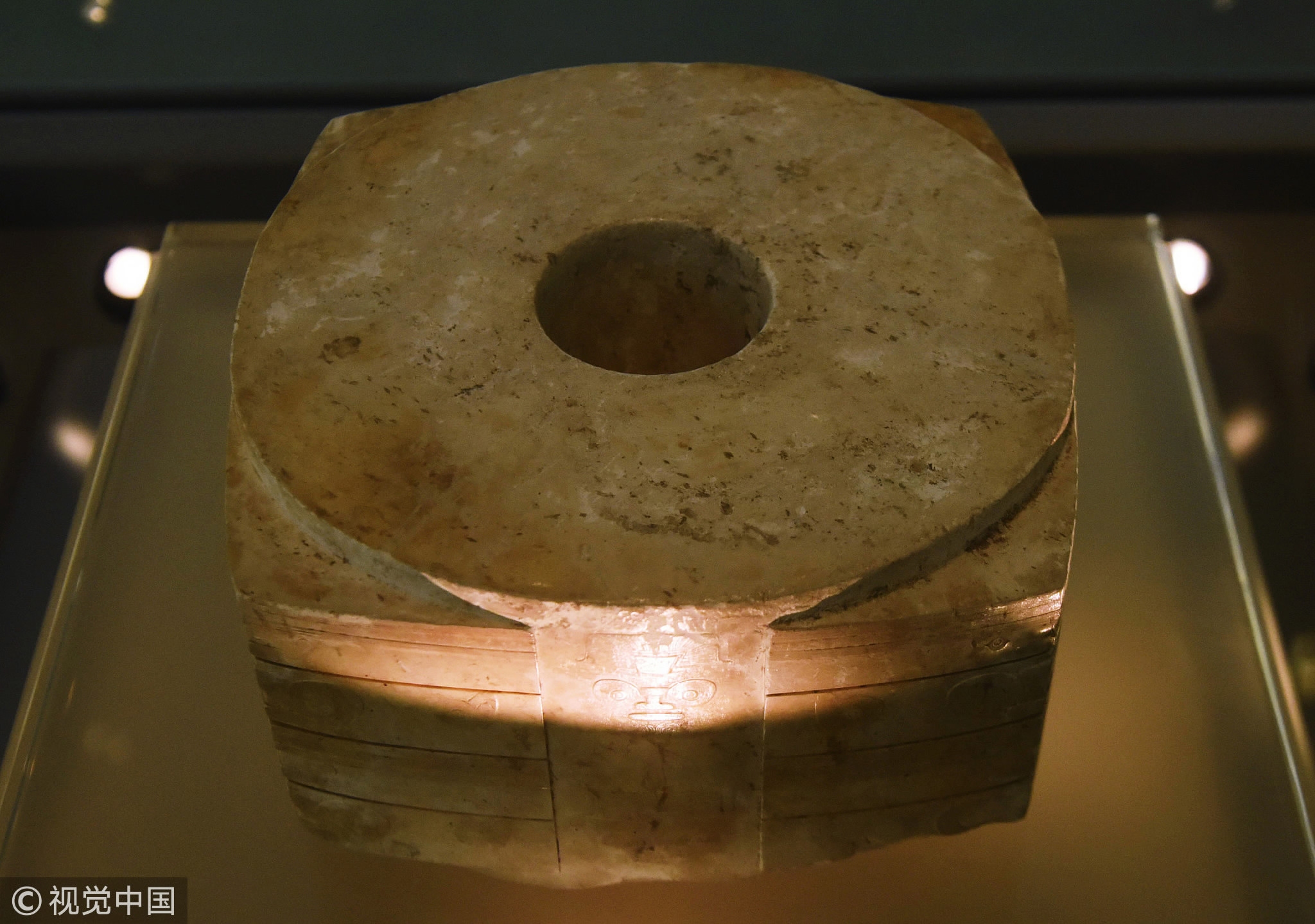
Culture
17:48, 29-Mar-2018
If Treasures Could Talk: What would Liangzhu Jade Cong King say?
CGTN

The series "If Treasures Could Talk" was a hit across China, inspiring many young viewers to learn more about their country's past. Today, we present to you the Liangzhu Jade Cong King.
Peering at us from the murky dawn of human existence, the eyes engraved on the Liangzhu Jade Cong King hint at our ancient ancestors' loves, fears and their beliefs.
Five thousand years ago, an advanced culture flourished in the Lake Taihu area of eastern China. There were towns, tombs, altars, villages, barracks, irrigation works and jade workshops.

Liangzhu Jade Cong King /VCG Photo
Liangzhu Jade Cong King /VCG Photo
Excavation of the site began in 1936. In the course of the following eighty years, the most important find it has yielded is this Jade Cong.
A Cong is a tubular vessel contained within a rectangular body. This one, weighing 6.5 kilos, and with a height of 8.9 centimeters and a diameter of 17.6 centimeters, is known as the "Jade Cong King".
It was discovered, in a tomb on Fanshan Hill, in 1986. Archaeologists identified the decoration on it as the legendary creature, a taotie. This was a common ancient motif, so initially it wasn’t thought to be of any great significance. However, later cleaning and photographing revealed something strange.
The narrow and seemingly unremarkable lines by the creature's eyes turned out to be hands, human hands. Following the disproportionately long arms, it led to a face. Evidently, this was no common taotie carving. In fact, it was identified as a rare, complete image of a god with the face of an animal.
The posture is intriguing. Elbows sticking out to the sides, fingers spread, the upper body hunched forward. Is this a god riding an animal? Or the incarnation of some sort of animal deity? Are they two different beings, or the same one, but with two faces?

Liangzhu Jade Cong King /VCG Photo
Liangzhu Jade Cong King /VCG Photo
Jade has a special place in Chinese culture. Ancient bone and bronze inscriptions tell us that jade was offered as tribute to the gods. The Liangzhu site has yielded more than forty various types of jade vessels. But items bearing the animal-god image have only been found in the finest tombs. Perhaps it was priests who were buried there.
The god is wearing a distinctive headdress with lines radiating outwards. Similar symbolism is also evident in the seven-thousand-year-old Hemudu culture. Are the two somehow connected?
The symbols inscribed on the Cong also appear on other Neolithic relics. This raises the question of how, at the dawn of history, ancient cultures interacted with one another across China's vast territory.
Gazing at us from 5,000 years ago, these eyes seem to be summoning us back to the ancient past.

SITEMAP
Copyright © 2018 CGTN. Beijing ICP prepared NO.16065310-3
Copyright © 2018 CGTN. Beijing ICP prepared NO.16065310-3